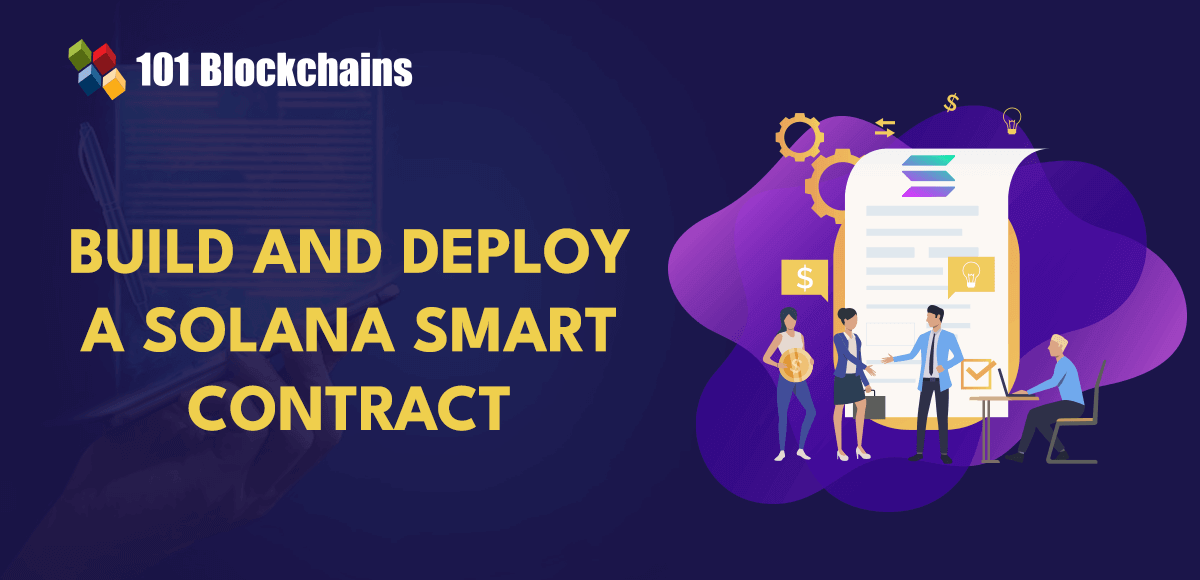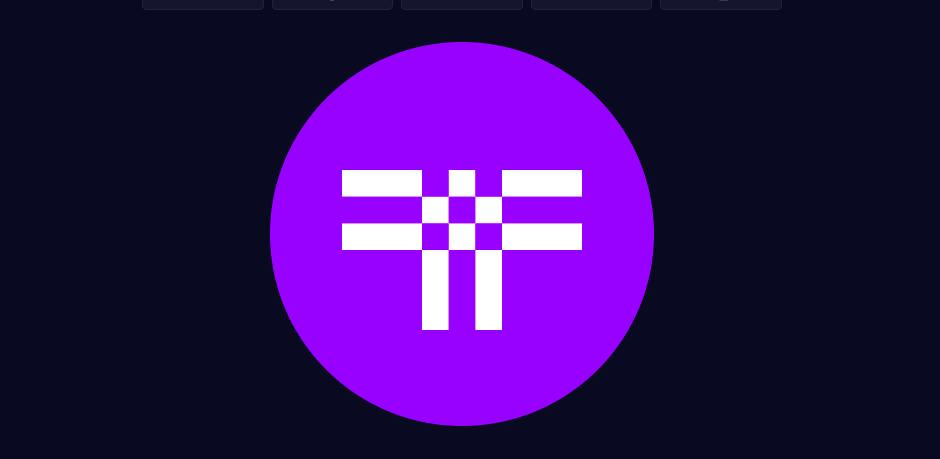How to Build and Deploy a Solana Smart Contract?

Today, blockchain technology acts as one of the most promising concepts that has come into existence.
It is basically a database mechanism that supports the transparent sharing of information via a business network. The emergence of the technology has made it possible to record as well as track transactions within a business network. The capabilities and properties of blockchain have significantly contributed to its rising popularity in the online community.
Now, the main question that you may have in your mind is – What is the link between a Solana Smart Contract and blockchain? The answer to the question is simple. Solana is a blockchain that has a number of similarities with Ethereum. In order to understand the true potential of a Solana smart contract, you need to become familiar with Solana. The guide will help you broaden your knowledge of Solana and Solana Smart Contracts.

What is Solana?
Solana is a blockchain platform, and its ultimate purpose involves the hosting of decentralized applications. The platform makes use of a ‘proof of history’ (PoH) along with a ‘proof of stake’ (PoS) consensus mechanism. The PoH mechanism allows the timestamping of transactions and supports efficient verification. On the other hand, the PoS mechanism allows validators to validate transactions.
Solana is capable of processing a large number of transactions per second in comparison to its rival, Ethereum. The fact that it charges much lower fees than its rival makes it immensely popular and in demand in the blockchain community. One of the main highlights of Solana is that its algorithms help in removing performance obstacles relating to blockchain software. This property makes it highly secure, scalable, and decentralized. Now that you are familiar with Solana blockchain, it is time to dive deeper and learn about Solana smart contracts.
Curious to understand the complete smart contract development lifecycle? Enroll now in the Smart Contracts Development Course
What are Solana smart contracts?
A Solana smart contract refers to a contract that is run on the Solana network. In case your question is not yet answered, you need to look at Solana and smart contracts separately. As already highlighted, Solana is a blockchain platform. A smart contract is a program that is stored on a blockchain network. These programs are capable of executing predefined actions. The execution can take place as soon as the necessary predefined conditions have been met.
Smart contracts are of immense value since they help in the automation of agreements between two or more participants. In smart contracts, codes play a key role as they mediate such contracts. As a result, participants do not have to worry about the involvement of any third parties or intermediaries. Moreover, they do not have to worry about incurring unnecessary losses. Solana smart contracts have gained massive popularity as they combine the benefits of the Solana blockchain and the smart contract concept.
Start learning Smart Contracts and its development tools with world’s first Smart Contracts Skill Path with quality resources tailored by industry experts now!
The architecture of Solana Smart Contract
In order to create Solana smart contract, you need to first get familiar with the architecture of Solana Smart Contract. You must note that the smart contract model in Solana is different from the conventional Ethereum Virtual Machine (EVM) enabled blockchain. The traditional model fuses logic or code as well as state into one contract whose deployment takes place on-chain. On the other hand, Solana’s smart contract exists in a stateless or read-only mode. Moreover, it only contains the program logic component.
After the deployment of a Solana smart contract, its accessibility is possible through external accounts. These external accounts are responsible for interacting with the program for the purpose of storing program interaction-specific data. As a result, there is a distinction between the state and the contact logic. Besides, you must note that the Solana blockchain stores data in the form of wallet information, unlike Ethereum.
Solana comes with a command line interface, also known as CLI and JSON RPC application programming interface. These elements play a chief role in enhancing the decentralized application’s (DApp) interaction with Solana. In addition, the DApp can utilize the existing software development kit to interact with the programs on the Solana blockchain.
Are you aspiring to learn the fundamentals of the Ethereum Virtual Machine and smart contracts’ upgradability? Enroll now in the Advanced Solidity Development Course.
Key elements for creating Solana Smart Contracts
The program, which represents the first development workflow, is fundamental to build Solana Smart Contract. It enables users to create as well as deploy custom Rust, C + +, and C programs on the Solana blockchain. After the deployment of these programs, anyone with a solid knowledge of programming can use them.
If you have solid programming skills, you can definitely use them. To communicate with the programs, you must write DApp. It can be done by using any software development kit client at hand. Then, you can use the JSON RPC application programming interface for internal workings.
The second development workflow involves the client, where users can write DApp. DApp can be used for the purpose of communication with the deployed programs. These apps are responsible for the submission of transactions to the programs through the software development kit client. Furthermore, it can create a diverse range of applications, such as decentralized exchanges, client wallets, etc.
Both the first and the second development workflow, i.e., program and client, function cohesively. By working together, they are able to form a comprehensive network of DApps as well as programs. It facilitates the interaction for updating the state and examining the blockchain.
Want to know the real-world examples of smart contracts and understand how you can use it for your business? Check the presentation Now on Examples Of Smart Contracts
Building Solana Smart Contracts
In order to build Solana smart contracts, you need to adopt a systematic approach. You do not need to rush to learn the process, as it may confuse you. However, by following the simple step-by-step guidance you can broaden your insight into Solana smart contract language and become a pro when it comes to building smart contracts.
-
Need for an ideal Solana environment
Before building Solana smart contracts, the first thing that you must do involves setting up a Solana environment. In the section, the Solana smart contract example that is presented is Hello World. It is a Rust program that can write its output to the console.
For some people, the direct running of a smart contract code from Windows may get confusing or overwhelming. If you also do not feel comfortable, you need not have to worry. An easier option is to set up the Ubuntu version of the window subsystem of the Linux operating system. By taking this step, you will be able to write the code in the Windows OS, and later, you can put together the Rust smart contract into a .so file. You need to give the necessary commands for setting up the ideal environment for the Solana smart contract deployment. Then, you need to run the Hello World app for testing purposes.
-
Use of Rust programming language
In this step, you have to use the Rust programming language to create Solana smart contracts. Some of the requisites that are needed for the process include Solana CLI v1.7.11 or the later version, the latest stable Rust build, NodJS version 14 or higher, and Git. These installations are fundamental for proceeding in your journey of building Solana smart contracts.
-
Understanding of the Hello World Program
Since the example that is given involves Hello World, you need to broaden your insight into it. Hello World is a smart contract or software that can log in to the console. In addition, it can count the total number of times the Hello World application is used for a specific account. Besides, it can store the exact number on-chain. To help you grasp the concept better, the explanation is given in a simple and comprehensible manner.
You need to use standard Solana programming parameters. It will help you to establish the very starting point of the program. In addition to this function, the specific portion helps serialize as well as deserialize arguments, passing them to and from the deployed application. This is possible with the help of BORSH or Binary Object Representation Serializer for Hashing. You need to give the appropriate command for the configuration of the HelloWorld Software.
After the completion of the process, the starting point, i.e., the process instruction function, will receive the program ID. The program ID is basically a public key that contains the specific location of the program’s deployment. Moreover, it contains the accounting parameter. This parameter is responsible for specifying the account to which the program must say hello.
The core logic of the program lies in the ‘Programresult’ class. It is responsible for generating a notice in such a situation. Moreover, it also chooses the appropriate account from the ‘accounts.’ In the specific example, a single account will be used. Subsequently, the application can assess whether it has the authority to edit data that is related to the particular account. In the end, the code is able to retrieve the number that is stored for the existing account. It also increases it by one unit and then writes the result, after which a message is displayed.
Excited to learn about the critical vulnerabilities and security risks in smart contract development, Enroll now in the Smart Contracts Security Course
Deployment of Solana Smart Contracts
Now that you know how to build a Solana smart contract, you may be asking yourself – How do I deploy a smart contract on Solana? The answer is fairly simple. The initial step for initiating the deployment of the contract involves the cloning of the repository. After all the processes have come to an end, you can alter the environment to Devnet. Devnet is the test net that Solana developers can use to test their smart contract skills. You need to see for yourself how capable you are when it comes to building Solana smart contracts.
After testing your skills, you need to produce a new key pair. It will basically enable the engagement of the account with the smart contracts and deployed applications in Solana Devnet. However, you need to bear in mind that this approach may not be entirely safe for crucial storage. Moreover, it is ideal only for the purpose of demonstration. Hence, for passing security, you will be elevated.
Once the creation of the account takes place, you can participate in airdrop and get your hands on the requisite SQL tokens. In addition, you will need certain imports to facilitate the implementation of the smart contract. To get the SQL tokens in the new account, you must use the suitable command. Now, you are ready to create the Hello World program with the help of the necessary command.
After its creation, you need to deploy it on Devnet. With the outcome of the previous command, you acquire the command for launching the program. It brings the deploying process to an end. You need to allocate a programming ID to the application. You can authenticate the software on the Solana Devnet Explorer.
Start learning Smart Contracts and its development tools with world’s first Smart Contracts Skill Path with quality resources tailored by industry experts now!
Conclusion
Solana is among the most popular names that one can come across in the blockchain realm. If you are passionate about the promising blockchain platform, you must definitely consider learning how to build and deploy the Solana Smart Contract. The steps in the guide can give you direction on how to create Solana smart contracts. Possessing programming and coding skills can surely give you an edge and enhance your learning process.
After getting the hang of the process, you can enjoy creating and deploying Solana smart contracts. As the blockchain platform has immense potential, you must broaden your understanding of it. The insight into the area can give rise to new opportunities for you in the blockchain setting. As more industries and sectors are adopting blockchain technology, the insight can open new career pathways for you. By being able to build as well as deploy smart contracts on the Solana platform in a real-world setting, you can expand your potential.

*Disclaimer: The article should not be taken as, and is not intended to provide any investment advice. Claims made in this article do not constitute investment advice and should not be taken as such. 101 Blockchains shall not be responsible for any loss sustained by any person who relies on this article. Do your own research!



